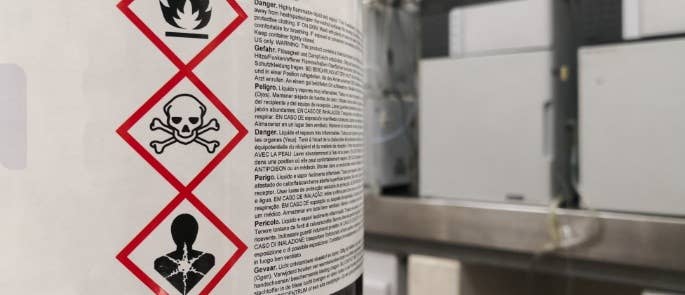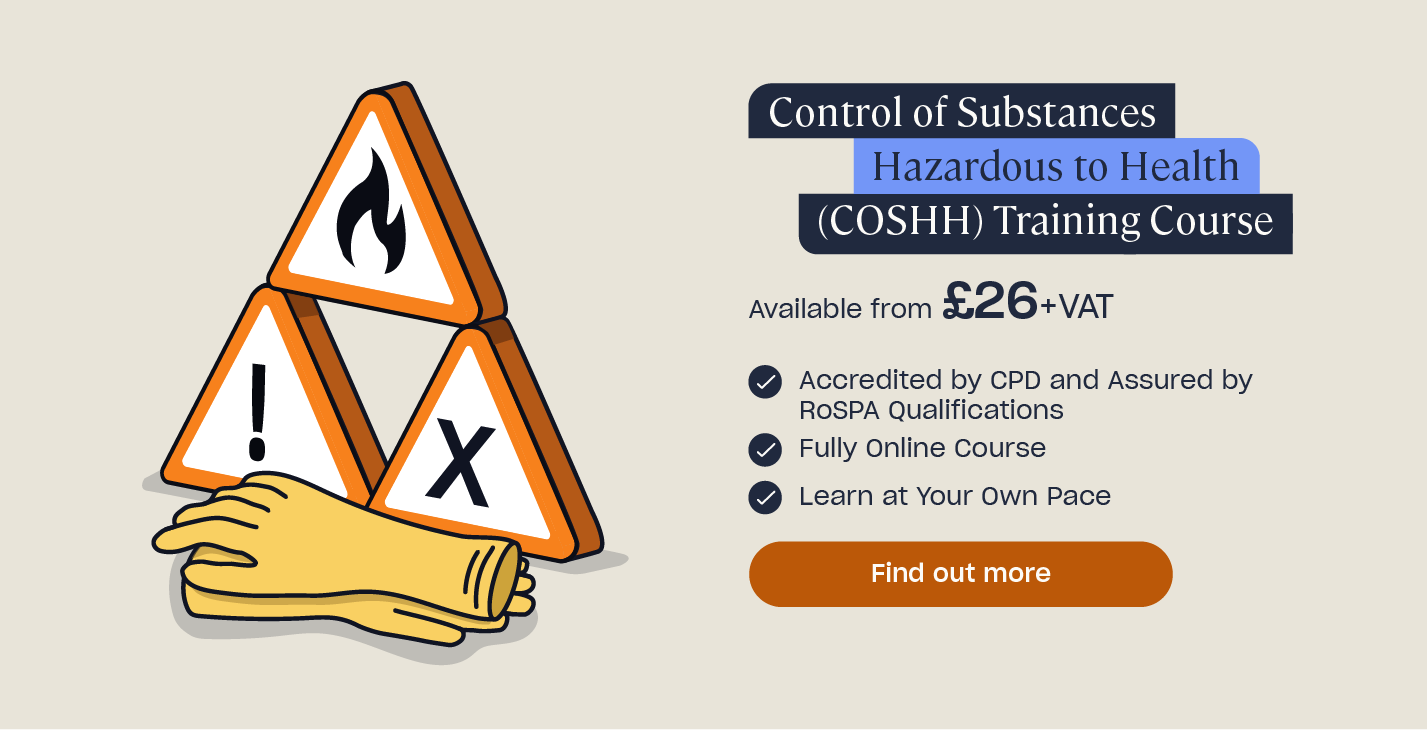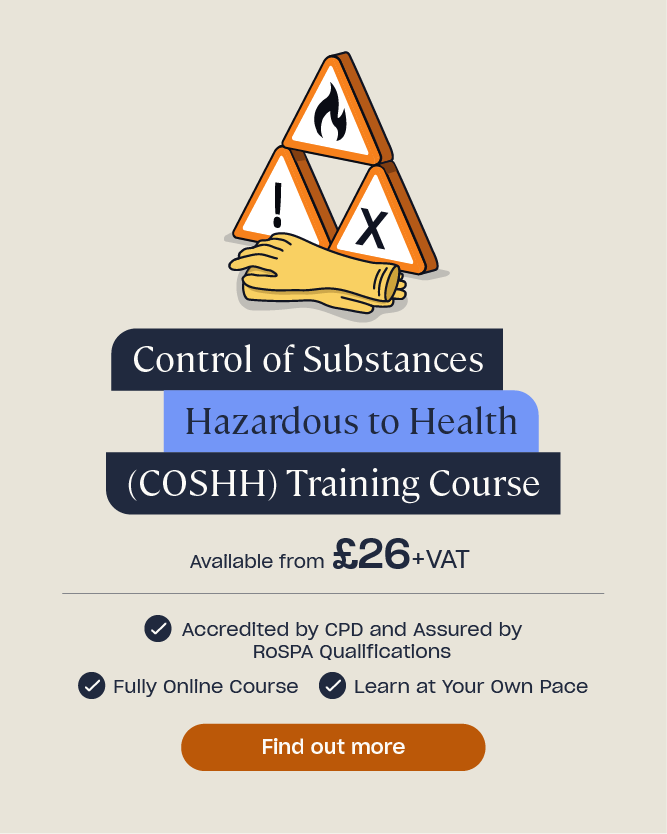The History and Importance of COSHH
As an employer of anyone who could come into contact with hazardous substances of any kind, you’re required by law to reduce the potential risk to your employees’ health.
If you or one of your employees is found to be in breach of the regulations, it’s a crime that could result in prosecution. Apart from the health and safety implications of not complying, and the fact that these important regulations are designed to save lives, it’s legislation that you can’t ignore.
What is COSHH?
COSHH is an acronym for the Control of Substances Hazardous to Health Regulations 2002 (as amended), which require employers to reduce the risks posed by hazardous substances in the workplace. By minimising exposure to hazardous substances (including chemicals, dusts, gases, and vapours), you prevent employees from suffering work-related ill-health, such as occupational dermatitis and asthma.
Why was COSHH introduced?
COSHH is part of a general trend towards improving and legislating for workplace safety, but it was largely a formalisation of safety measures that employers were commonly already taking, as required by the Health and Safety at Work Act 1974.
The COSHH regulations have been an important factor in improving safety standards, raising awareness of the risks and giving employers an incentive to ensure that their workplace is as safe as possible.
The Control of Substances Hazardous to Health (COSHH) Regulations grew from an earlier piece of legislation, originally introduced in 1988, designed to place more focus on the dangers associated with hazardous substances and the measures employers should take to reduce risk.
The more recent legislation combines amendments of earlier regulations with the implementation of a number of European Union directives. In the quarter of a century since the regulations were brought in, occupational health has steadily improved. Statistics from the Health and Safety Executive show that work-related cases of ill health have gradually reduced, though there’s still room for improvement.
What substances are covered by COSHH?
The COSHH regulations cover certain substances that can be hazardous to health. This includes chemicals, fumes, dusts, mists, vapours, pastes, liquids, gases, nanotech, and biological agents if they’re toxic, harmful, irritant, corrosive, sensitising, carcinogenic, mutagenic, or toxic to reproduction. Substances that have hazard symbols on the packaging and a Workplace Exposure Limit (WEL) established by the HSE are regulated by COSHH.

What measures do the regulations require?
To keep employees safe, the COSHH regulations require employers to take certain steps to ensure that exposure to hazardous substances is kept to a minimum, and that risk is reduced and monitored where exposure is unavoidable. In brief, the employer’s duties include:
Risk assessment
The legislation requires employers to carry out a risk assessment in order to identify potentially hazardous substances to which their employees may be exposed. In practice, this means systematically looking around the workplace, noting down hazardous substances and jobs that may lead to exposure to them. Accident logbooks should be reviewed for any areas of concern that employees may already have reported.
Prevention, control and/or monitoring of exposure
For each issue highlighted in the risk assessment, the next step is to determine what health risks they entail and whether alternative substances can be used that lessen or eliminate the risk of exposure.
The ideal situation is to prevent exposure by changing processes or by using the substance in a safer form, but where it does unavoidably occur, you’re required to control and monitor it. That means putting in place appropriate safety procedures and measures, such as totally or partially enclosing the area in which the substance is used, or ensuring proper ventilation.
Exposure must be routinely monitored – for example with air sampling pumps – with monitoring intervals depending on the type of substance.
Control measures
After appropriate control measures have been implemented, and safety equipment provided, they must be routinely maintained and tested to ensure that they are in good condition and continue to provide adequate protection.
Health surveillance
There are certain situations in which you’re required to monitor the health of employees who are exposed to hazardous substances, such as when they have a diagnosable disease or health symptoms that could be linked with exposure to a hazardous substance.
Health surveillance is also required when there’s a “reasonable likelihood” that an employee may become ill because of the job they do. There must be a valid monitoring technique for health symptoms related to the disease of threat, and it must be of minimal risk to the employee.
Training
Finally, it should be noted that it’s not just employers who have an obligation under COSHH regulations. For their own safety, employees are also duty-bound to ensure that they comply with COSHH, as they need to ensure that they follow safety measures correctly and report defective equipment.
As such, employees must have appropriate training and supervision to ensure that they understand the substances they could be coming into contact with, and know how to comply with COSHH stipulations. This also means that they should know how to deal with an accident or emergency should one arise.
Need a Training Course?
Our COSHH Training is designed to give workers knowledge of the health risks surrounding work with hazardous substances, including how to undertake a COSHH assessment by identifying the risks and the control measures needed, and ensure that they understand how to work safely with hazardous substances.
The greater the awareness and proper adherence to COSHH, the higher the likelihood that there will be fewer workplace health issues. And when compliance and non-compliance could, in the long term, be the difference between life and death, it becomes abundantly clear how important this legislation really is.
Further Resources:
- The New COSHH Hazard Symbols & Their Meanings
- COSHH – A Guide to Employers’ and Employees’ Responsibilities
- COSHH Storage Requirements
- COSHH Quiz
- What is COSHH Training and Why is it Important for Cleaners?
- Understanding DSEAR – Area Classification & Hazardous Substances
- A Hairdresser’s Guide to COSHH in the Salon
- COSHH Training







